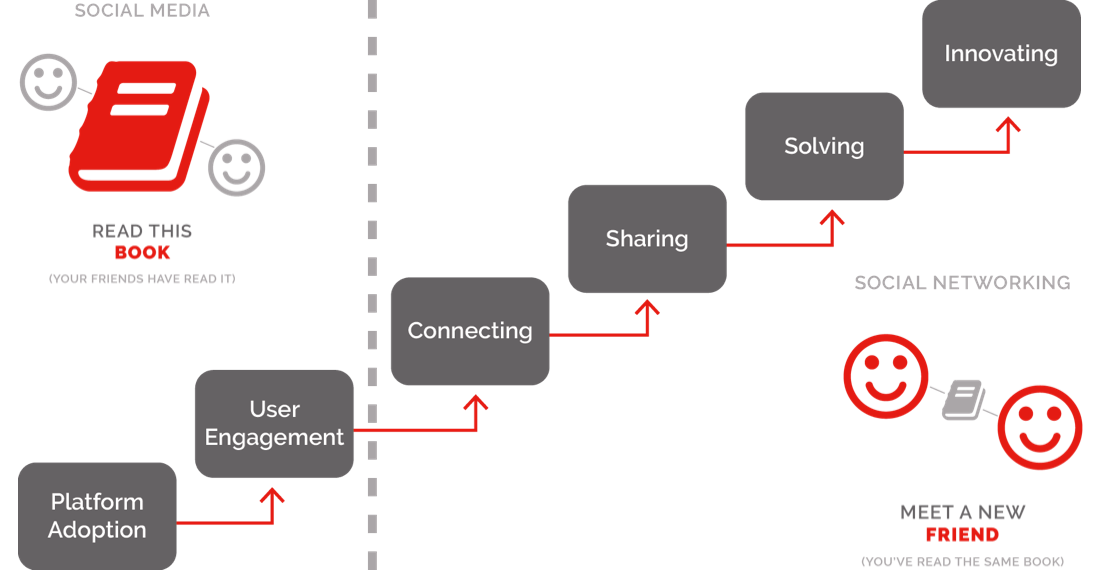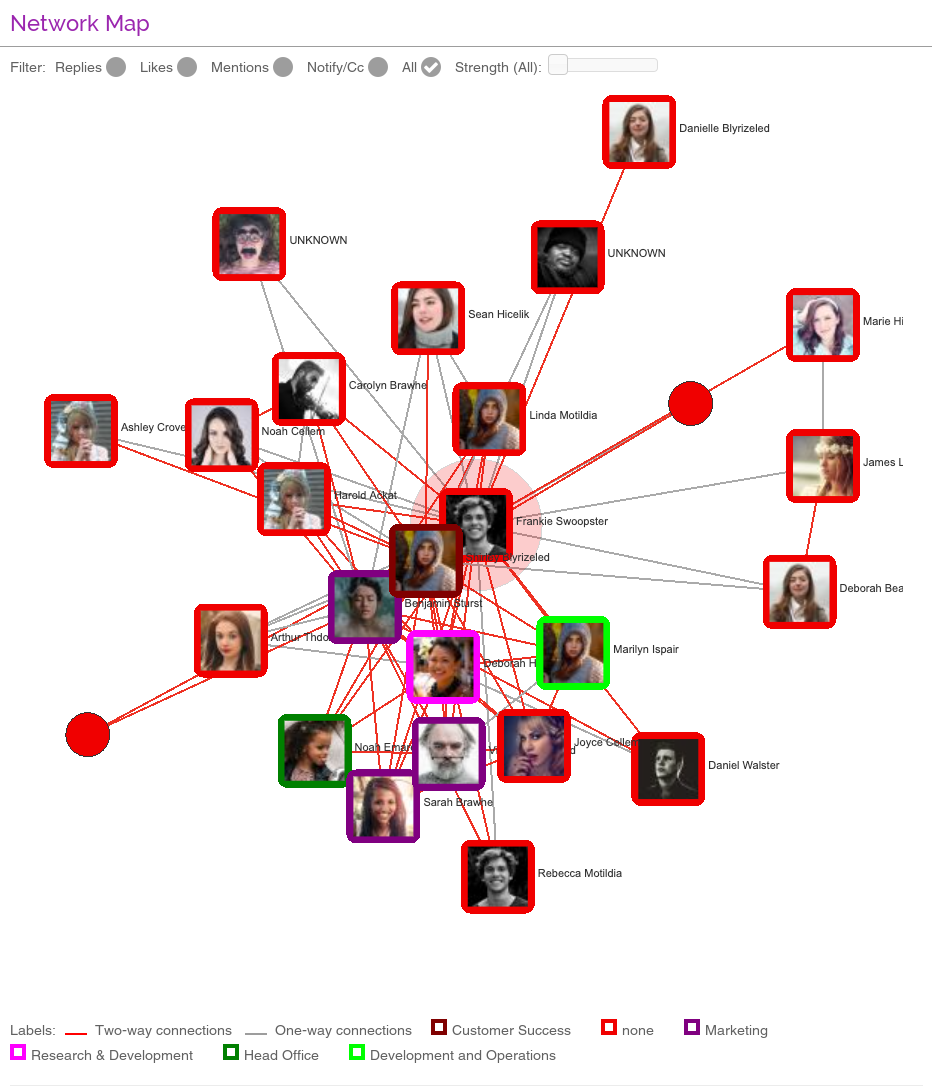Influential People – SWOOP Style
In this series of articles, we are profiling each of the SWOOP Analytics Widgets by referencing them to the Enterprise Social Maturity Framework, that we introduced previously. The SWOOP analytics widgets are designed to guide our end users through each stage of the maturity journey. The ‘Influential People’ widget is seen to be most valuable when you are looking to solve difficult problems and/or driving new innovations to positive outcomes:
Influential people, as the name suggests, are those people that are best positioned to influence others through their interactions. Platforms like LinkedIn and Twitter typically use the popularity of content published to measure influence. In LinkedIn’s case, profile views contribute strongly to your perceived influence. SWOOP uses a different basis for measuring influence, drawn from the science of social network analysis (SNA). SNA bases influence measured on the size and nature of one’s connections. An individual’s influence in SWOOP is measured by the size of their personal network.
Your Personal Network Map, which can be viewed on your personal tab, is a visual representation of your full network. At the Group, Business Unit or Topic level, influence is measured by an individual’s network within the Group, Business Unit or those engaging with a given topic. A network connection is formed when you interact with someone online. It could be a ‘reply’ or ‘like’ you have made to a post, or vice versa. Activity levels are not considered; only the unique connections made.
Business Imperative
If you want to influence the activities of a group of people, the most efficient way is to engage with those that are best placed to influence them. Influence propagates through relationship links. Enrolling the influencers in your target audience can accelerate the change that you are seeking. You can aim to become an influencer yourself by looking to expand your network within your target audience. If you are identified as an influencer yourself, it is important to use your privileged location in the network to bring others into the network i.e. being the Catalyst/Engager, ensuring diverse points of view are accommodated.
Influencers can play a big part in helping their organisations to become more responsive. Their central position in the network enables them to become important role models by being personally responsive to problems they see. Influencers need not be able to solve the problems themselves, but they are ideally placed to identify those in their network that can.



